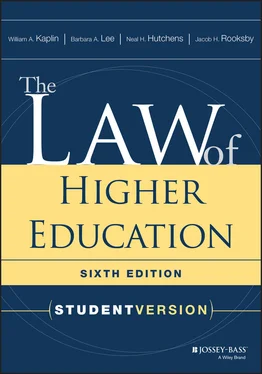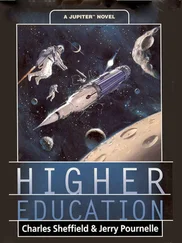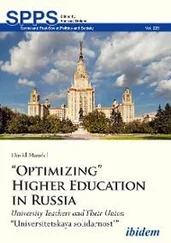10 10See, e.g., Steel v. Industrial Development Board of Metropolitan Government of Nashville, 301 F.3d 401 (6th Cir. 2002); Virginia College Building Authority v. Lynn, 538 S.E.2d 683 (Va. 2000).
11 11For instance, the Court emphasized that the state's scholarship program “does not require students to choose between their religious beliefs and receiving a government benefit” (540 U.S. at 721–22); and yet it later acknowledged that “majoring in devotional theology is akin to a religious calling” and that Davey's “religious beliefs” were the sole motivation for pursuing such studies (540 U.S. at 721). It thus seems that, for Davey, the state did indeed put him in the position of choosing between his religious calling and his Promise Scholarship.
12 12The discussion in this section—especially the middle portions that differentiate particular policy makers' functions from those of attorneys, identify alternative policy-making processes, set out the steps of the policy-making process and the characteristics of good policy, and review structural arrangements for facilitating policy making—draws substantially upon these very helpful materials: Stephen Dunham, “Preventive Lawyering: Drafting and Administering Policies to Avoid Litigation” (February 2001), a conference paper delivered at the 22nd Annual Law and Higher Education Conference sponsored by Stetson University College of Law; Linda Langford & Miriam McKendall, “Assessing Legal Initiatives” (February 2004), a conference paper delivered at the 25th Annual Law and Higher Education Conference sponsored by Stetson University College of Law; Kathryn Bender, “Making and Modifying Policy on Campus: The ‘When and Why’ of Policymaking” (June 2004), a conference paper delivered at the 2004 Annual Conference of the National Association of College and University Attorneys; Tracy Smith, “Making and Modifying Policy on Campus” (June 2004), a conference paper delivered at the 2004 Annual Conference of the National Association of College and University Attorneys; and “Policy Development Process with Best Practices,” a document of the Association of College and University Policy Administrators, available (along with additional resources on developing and implementing policy) on the association's website at https://acupa.org.
13 13The focus on administrators and counsel, here and elsewhere in this section, does not mean that faculty (the educators) are, or should be, cut out of the policy-making process. This section is based on the assumptions that administrators are sometimes faculty members or educators themselves; that administrators will regularly provide for faculty participation in policy-making committees and task forces; that administrators who oversee academic functions will regularly consult with pertinent faculties of the institution, directly and/or through their deans; and that administrators will respect whatever policy-making and decision-making roles are assigned to faculty under the institution's internal governance documents.
2 Legal Planning and Dispute Resolution
Chapter 2 provides foundational information on the sources of legal liability for colleges and universities and how legal disputes are initiated and resolved. It discusses litigation, that is, the process of resolving a dispute in a court or government agency proceeding, and provides suggestions for how institutions can work to avoid litigation and ensuing legal liability. The concept of risk management is introduced; the role of counsel is explored, particularly with respect to the differences between treatment law ( responding to litigation, threatened litigation, and government compliance investigations) and preventive law (developing policies and practices that minimize or forestall legal disputes); and the concept of preventive legal planning is explained. Finally, several models of alternative dispute resolution, which avoids agency or course litigation, are discussed and evaluated .
Section 2.1. Legal Liability
2.1.1 Overview.Postsecondary institutions and their agents—the officers, administrators, faculty members, staff members, and others through whom the institution acts—may encounter various forms of legal liability. The type and extent of liability depend on the source of the legal responsibility that the institution or its agents have failed to meet, and also on the power of the tribunal that determines whether the institution or its agents have violated some legal responsibility.
The three sources of law that typically create legal liabilities are the federal Constitution and state constitutions, statutes and regulations (at federal, state, and local levels), and state common law (see Section 1.4.2.4). Constitutions typically govern actions by public institutions and their agents, although state constitutions may also be applied, under certain circumstances, to the conduct of private institutions and individuals. Statutes typically address who is subject to the law, the conduct prohibited or required by the law, and the consequences of failing to comply with the law. For example, employment discrimination laws specify what entities (employers, labor unions, employment agencies) are subject to the law's requirements, specify the types of discrimination that are prohibited by the law (race discrimination, disability discrimination, and so on), and address the penalties for violating the law (back pay, injunctions, and so on). For many statutes, administrative agency regulations elaborate on the actions required or prohibited by the statute, the criteria for determining that an institution or individual has violated the statute or regulation, and the methods of enforcement. Finally, the common law, particularly contract and tort law, has developed standards of conduct (for example, tort law's concept of legal duty and its various “reasonable person” standards) that, if violated, lead to legal liability.
2.1.2 Types of liability.Liability may be institutional (corporate) liability on the one hand or personal (individual) liability on the other. Depending on who is sued, both types of liability may be involved in the same case. Constitutional claims brought by faculty, students, or others against public institutions may create institutional liability (unless the institution enjoys sovereign immunity, as discussed in Section 3.4) as well as individual liability, if individuals are also sued and their acts constitute “state action” or action under “color of law” (see Section 4.4.4). Statutory claims often (especially under federal nondiscrimination statutes) create only institutional liability but sometimes also provide for individual liability. Contract claims usually involve institutional liability but occasionally may involve individual liability as well. Tort claims frequently involve both institutional and individual liability, except for situations in which the institution enjoys sovereign or charitable immunity. Institutional liability for tort, contract, and constitutional claims is discussed in Sections 3.2, 3.3, and 3.4; personal liability for these claims is discussed in Section 4.4.
2.1.3 Agency law.Since postsecondary institutions act through their officers, employees, and other agents, the law of agency plays an important role in assessing liability, particularly in the area of tort law. Agency law provides that the employer (called the “principal” or the “master”) must assume legal responsibility for the actions of its employees (called “agents” or “servants”) and other “agents” under certain circumstances. Under the general rules of the law of agency, as applied to tort claims, the master may be liable for torts committed by its employees while they are acting in the scope of their employment. But the employer will not be liable for its employees' torts if they are acting outside the scope of their employment, unless one of four exceptions can be proven: for example, (1) if the employer intended that the tort or its consequences be committed; (2) if the master was negligent or reckless; (3) if the master had delegated a duty to the employee that was not delegable and the tort was committed as a result; or (4) if the employee relied on “apparent authority” by purporting to act or speak on behalf of the master (American Law Institute, Restatement (Third) of Agency §§ 7.03–7.08 (2006)). Generally speaking, it is difficult for an employer to avoid liability for the unlawful acts of an employee unless the allegedly unlawful act is taken to further a personal interest of the employee or is so distant from the employee's work-related responsibilities as to suggest that holding the employer legally responsible for the act would be unjust.
Читать дальше












